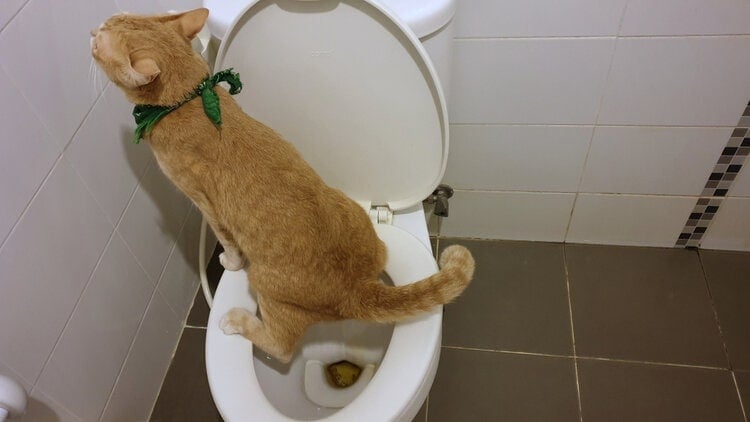Almost everyone may have their own unique way of thinking when it comes to How to Dispose of Cat Poop and Litter Without Plastic Bags.

Introduction
As cat proprietors, it's essential to bear in mind exactly how we deal with our feline friends' waste. While it may appear practical to purge feline poop down the toilet, this method can have damaging repercussions for both the environment and human wellness.
Ecological Impact
Flushing pet cat poop introduces harmful virus and parasites right into the supply of water, posturing a significant threat to aquatic ecological communities. These contaminants can negatively influence marine life and compromise water top quality.
Health Risks
Along with ecological concerns, flushing pet cat waste can likewise position health threats to people. Pet cat feces may have Toxoplasma gondii, a bloodsucker that can cause toxoplasmosis-- a possibly severe illness, especially for expecting females and people with weakened body immune systems.
Alternatives to Flushing
The good news is, there are much safer and more accountable means to deal with feline poop. Take into consideration the complying with choices:
1. Scoop and Dispose in Trash
One of the most common method of throwing away pet cat poop is to scoop it right into a biodegradable bag and throw it in the trash. Make sure to make use of a committed litter scoop and deal with the waste quickly.
2. Use Biodegradable Litter
Choose naturally degradable feline trash made from materials such as corn or wheat. These trashes are environmentally friendly and can be securely gotten rid of in the trash.
3. Bury in the Yard
If you have a yard, consider burying cat waste in a designated location far from veggie gardens and water sources. Be sure to dig deep adequate to stop contamination of groundwater.
4. Mount a Pet Waste Disposal System
Invest in a pet garbage disposal system especially developed for feline waste. These systems use enzymes to break down the waste, reducing odor and ecological effect.
Conclusion
Responsible pet dog possession prolongs beyond giving food and sanctuary-- it likewise involves proper waste administration. By refraining from purging pet cat poop down the bathroom and opting for different disposal approaches, we can lessen our ecological footprint and protect human wellness.
CAN I FLUSH MY CAT'S POOP DOWN THE TOILET?
Always avoid flushing cat poop down the drain because not only could it potentially contain harmful parasites called toxoplasmosis, the litter could sit in your line and lead to a clog.
Plenty of waste gets flushed down your toilet every day, so what harm could a little cat poop and cat litter do? The answer is a lot, which is why you never want to send it down your drains.
Can I Flush My Cat's Poop Down The Toilet?One of the biggest problems with flushing your cat’s presents is the harmful parasites in your feline’s stool called toxoplasmosis. Extremely dangerous for humans, especially pregnant women and people who are immunocompromised, these parasites can cause a multitude of problems for unborn babies and even cause death or miscarriage if the infection happens early. That’s why you should always avoid touching cat poop. Also, water systems are not equipped to handle toxoplasmosis and are unable to destroy the parasite before it’s sent back into the environment, potentially jeopardizing the health of local area wildlife, specifically marine life.
Flushing cat poop could also lead to a future drain clog. Try as you may to eliminate any litter from it, there will always still be some stuck on there – and even if it says flushable on the label, it’s not! Cat litter is made up of bentonite clay, which has the tendency to harden when wet, creating a thick, almost cement-like quality. Cat litter that ends up down the drain can expand from the moisture in the pipes and then harden, blocking any wastewater. If you have a septic tank or a cesspool, it cannot handle cat litter either, no matter what kind. If it solidifies in the tank, in any of the system’s major parts like the inlet baffle, it’ll create some expensive problems.
The best way to dispose of cat poop safely is to scoop it into a bag and throw it into the trash – and ways of dealing with the smell include adding baking soda and replacing the box more.
Now that we’ve explained the potential harm that flushing cat poop can cause to you and your drains, you might be wondering the best way of dealing with it. Unfortunately, it’s the old-fashioned way of scooping it into a bag and then placing it into a trash can. They also make pet-proof trash cans that lock in the smell, so that you don’t have to always immediately take it out. If you’re tired of smelling the litter box after even just one use from your feline, there’s things you can do to help combat that smell. Adding baking soda to the litter will reduce smells, but just don’t add too much or your cat will no longer want to use the box. You could also replace the box more frequently, at least once a year, as those smells can just seep inside the scratch marks. Lastly, try changing to a new litter formula – some are better with smells than others.

I stumbled upon that piece of writing about How to Dispose of Cat Poop and Litter Without Plastic Bags while doing a search on the internet. So long as you enjoyed our post kindly make sure you remember to share it. Many thanks for taking the time to read it.
Book Appointment Now
Comments on “Never Flush Cat Poop Down Your Toilet - Protect Your Plumbing System”